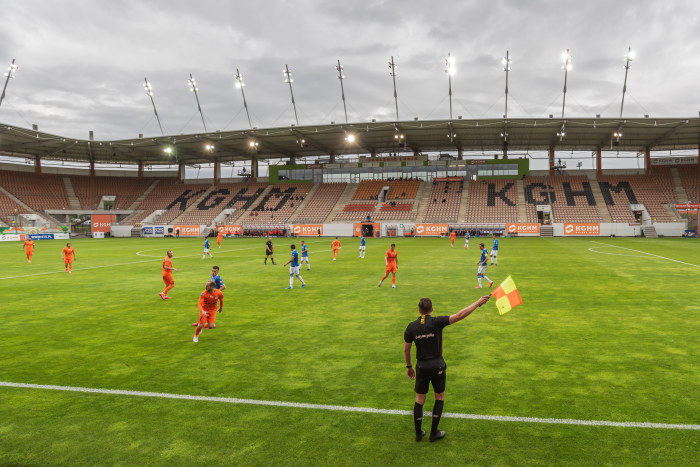As some sporting events return without spectators due to COVID-19, Ira Lacher has changed his mind about attending games in person. -promoted by Laura Belin
Not long ago, I vowed to not watch a single minute of a sports event played in an empty stadium or arena. What’s a game without fans?
I was totally wrong. And it’s not because I can’t live without soccer, now that the English Premier League is restarting. Heck, I’ve lived without it for four months, and I’m still here.
But I’ve changed my mind because of an epiphany: Major professional and college sports are no longer spectacles for the paying customer. They haven’t been for at least a generation. They are nothing more than made-for-TV reality shows. Fans are simply schnooks who pay for the privilege of being props on the set.
Performers are energized by an audience. Like actors and singers, athletes are performers and get energy from playing before tens of thousands of cheering fans. “I don’t see how you could play a game without the fans. I feel like that takes out the excitement and the fun out of the game,” the Los Angeles’ Rams defensive tackle Aaron Donald told reporters. But fans don’t matter to the owners’ bottom line.
This slow dawning was occurring over time: attendance has been falling dramatically throughout sports stalwarts such as baseball, college football, and NASCAR (pre-Confederate flag ban). But it has been accelerated by the unknown of the pandemic, which has caused thousands to say: Why should I buy a lousy seat, park my car, eat lousy food and drink lousy beer and sweat or freeze in a stadium when I can enjoy all this and more in my den without spending hundreds of dollars ?
This is feeding on itself because TV revenue long eclipsed traditional sources of income for sports club owners. Once, owners needed fannies in the seats because they relied on money from gate receipts, concessions and parking. Also, fans preferred rooting in person to squinting at fuzzy gray or weirdly colored images on a 19-inch box, especially when you could get a good seat at a game, plus a hot dog and a beer, for far less than a car loan.
But now, it can cost more than a monthly payment for a Mercedes to take a family of four to a professional or major college game. Also now, TV sets are 65-inch movie screens with definition sharp enough to count each bead of sweat on a goalkeeper’s face as they await a penalty kick.
When so many of us are out of work, and so many more are rethinking the safety of huddling shoulder to shoulder, it will become even less desirable to attend a game in person. In other words, get used to stadiums emptier than Tulsa’s BOK Arena for last weekend’s Trump rally.
Games without fans are an extreme, but empty venues are nothing new. The old American Basketball Association routinely played before houses in the triple digits. Longtime Cubs fans can remember when physical distancing wasn’t a problem in Wrigley Field. Even the vaunted New York Yankees once played before an announced crowd of 413, in 1966.
Owners shuddered at those numbers then, but they don’t now because paying customers don’t matter. As long as the games are played, the TV money keeps on keepin’ on. So grab a beer, settle in, and watch the Premier League, or the NBA or NHL or Major League Soccer. The games will go on, with players, managers, coaches and officials. The only things missing will be the props.
Top image by Dziurek, available via Shutterstock: Aerial view of stadium with no spectators during June 6, 2020 football match in Lubin, Poland between KGHM Zaglebie Lubin and Lech Poznan.

